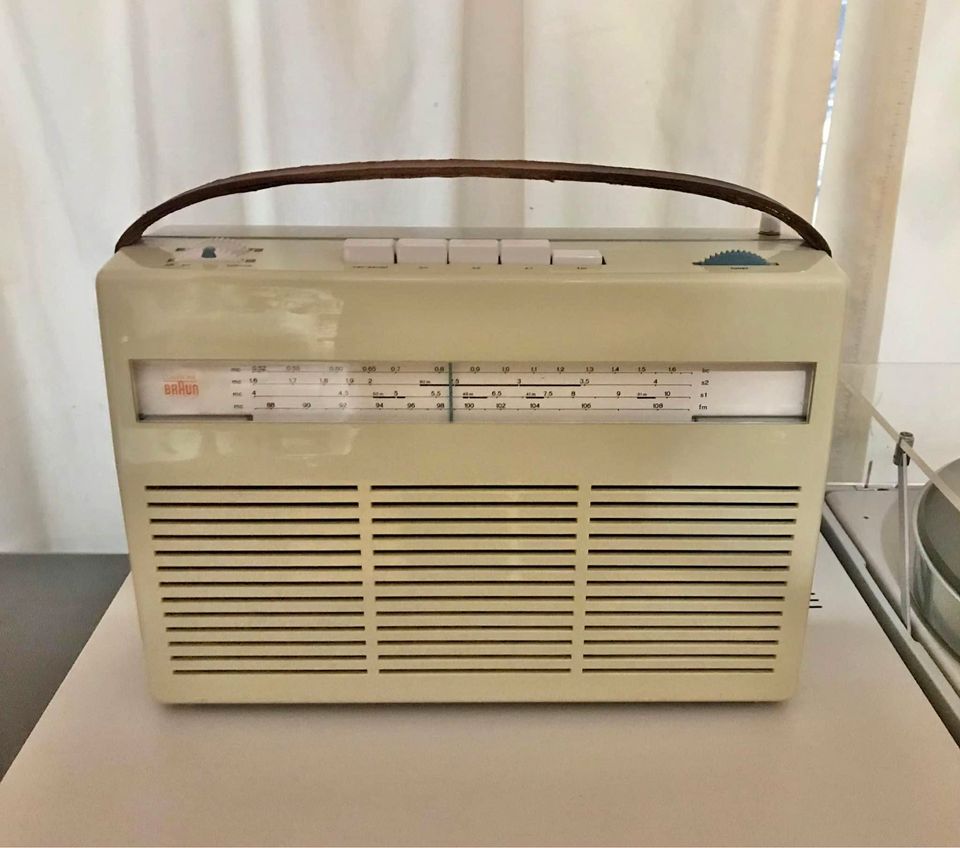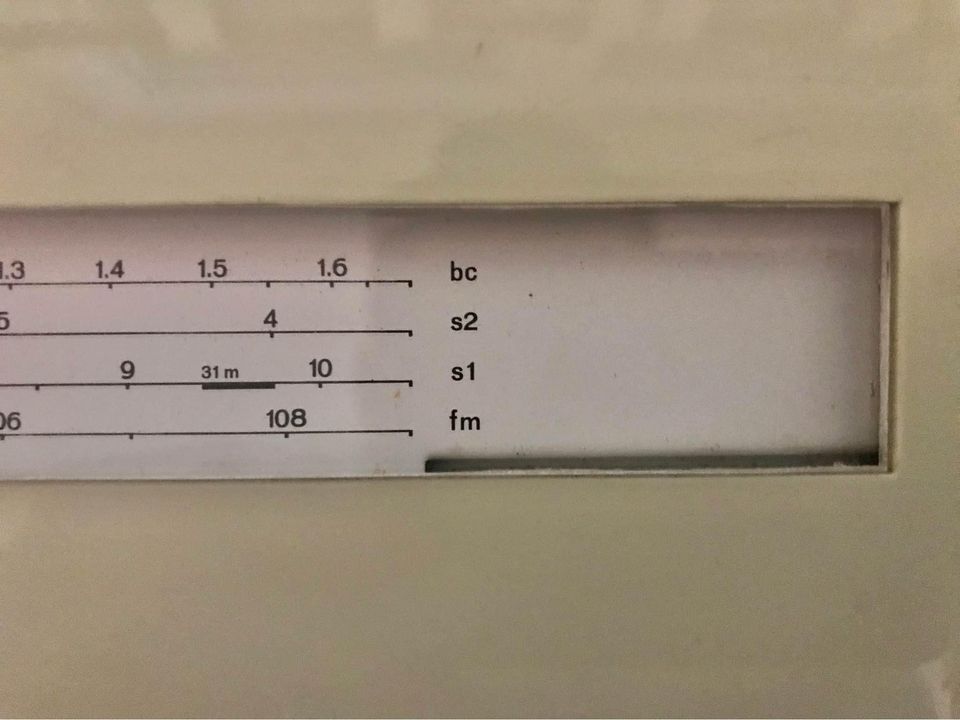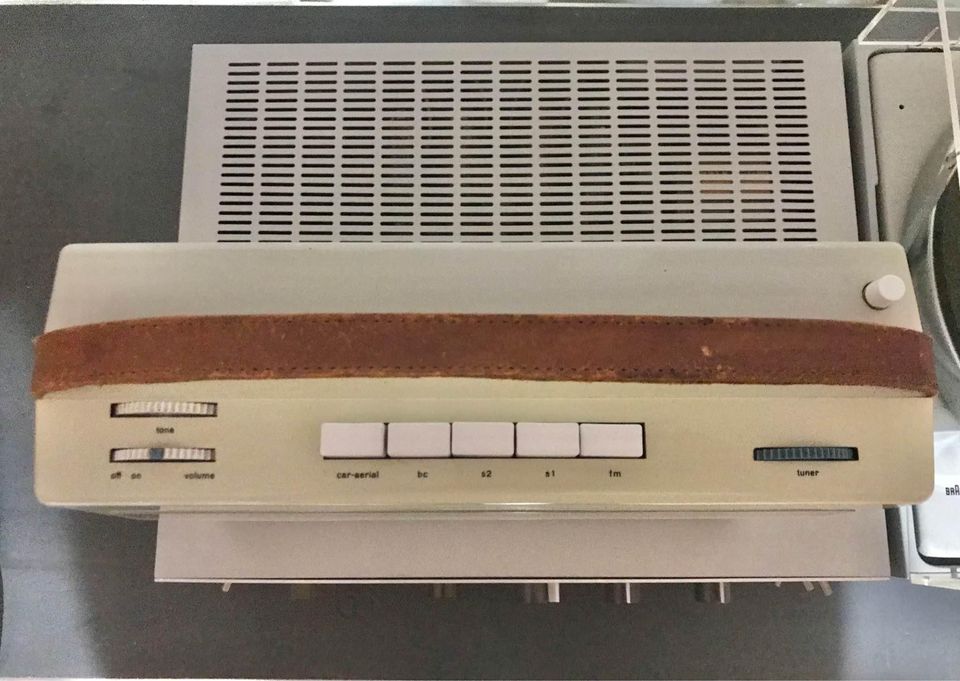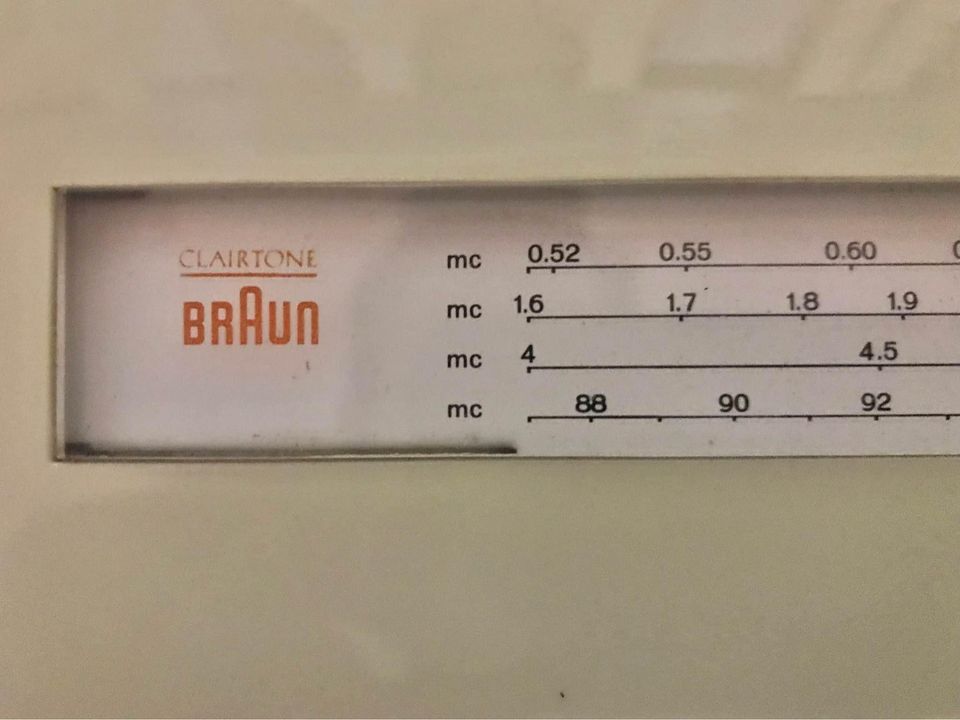 Many thanks to SWLing Post contributor, Haluk Mesci, who writes:
Many thanks to SWLing Post contributor, Haluk Mesci, who writes:
I recently bought a Braun T1000 in unbelievably good condition.
And today I noticed a Facebook ad for a Braun T23, on sale here in Toronto.
Judging from the photos, it is obvious that there is an ‘Eton E1 – Grundig YB 500’ kind of
similarity between T1000 and T23.
The price is unheard of, but I thought it could be a little post on the SWLing Post.
Best,
Haluk
Thank you for sharing this, Haluk. I do love all of the Braun designs, but it’s true that prices can be a little outrageous. I can see this one has been on the market for a while.




No one caught the other brand name on the radio? Clairtone was a Canadian electronics manufacturer started by Peter Munk. In their day, between 1958 and 1972, they were on the cutting edge of radio and especially stereo design. That they would partner with Braun is no surprise. More can be found here. https://en.wikipedia.org/wiki/Clairtone
Hi Haluk and Friends,
The 1960 Braun T23 is classic late 1950s / early 1960s design. This Braun line of radios, while taking some cues from early Sony transitors radios and others, also set the tone – no pun intended – of what a portable radio should look like in the 1960s to today.
Like many other Braun products of the time, the T23 was designed by legendary German industrial designer Dieter Rams.
Rams’ designs and design philosophy still influence designers today, Apple is a notable example.
Haluk is right to see a design link to the iconic T1000 – oh how I lust after a mint one of those! – also designed by Dieter Rams.
And I agree with Haluk that one can see the design influences iof Dieter Rams n many Tecsun produced radios, like those Haluk mentions as well as for example in the big old Grundig Satelit 800 aka Tecsun Ham 2000
Braun at the time was regarded as a premium brand and Dieter Rams helped Braun distinguish itself through gorgeous minimalist design. As a child in the 1960s my parents had one of his beechwood Braun radiogrammes – a substantial coffee table sized partly glass topped piece of furniture that contained a grammophone and a radio.
In the 1970s Braun came up with 10 principles of good design, summarised by the Design Museum AS:
“1. Good design is innovative
2. Good design makes a product useful
3. Good design is aesthetic
4. Good design makes a product understandable
5. Good design is unobtrusive
6. Good design is honest
7. Good design is long-lasting
8. Good design is thorough down to the last detail
9. Good design is environmentally-friendly
10. Good design is as little design as possible”
Source:
https://designmuseum.org/discover-design/all-stories/what-is-good-design-a-quick-look-at-dieter-rams-ten-principles
Here are some links to more info about Dieter Rams
Biography:
https://www.newyorker.com/culture/cultural-comment/what-weve-learned-from-dieter-rams-and-what-weve-ignored
https://se.braun.com/en/design-and-craftsmanship/braun-designers
https://www.domusweb.it/en/biographies/dieter-rams.html
https://www.designindex.org/designers/design/dieter-rams.html
Documentary portrait
https://www.hustwit.com/rams
Items in the NY MoMA collection
https://www.moma.org/artists/8451
Rams’ Influence on Apple
https://www.wired.com/wiredinsider/2018/08/the-future-of-design/
Rams on Apple
https://www.telegraph.co.uk/technology/apple/8555503/Dieter-Rams-Apple-has-achieved-something-I-never-did.html
Dieter Rams design principles illustrated with a variety of Rams designs
https://www.stirworld.com/inspire-people-dieter-rams-celebrating-the-genius-with-10-products-for-10-commandments-of-design
Rams designs – mainly for furniture company Vitsoe
https://www.vitsoe.com/rw/about/dieter-rams
I have mixed feelings about Wikipedia – some articles are deliberately misleading and have gatekeepers who redact corrections – nonethless Wikipedia is very useful as a starting point to delve down rabbit warrens… so here’s a link to their article on Rams:
https://en.wikipedia.org/wiki/Dieter_Rams
73
Julian
The design of this radio goes back to the Braun “Transistor 1” (“T1”) of 1957 (!) with LW, MW and SW bands.
https://www.hifi-archiv.info/Braun/1957%20Braun%20Radio,%20Phono,%20TV/32.jpg
Consecutive models with the same design show up in the following years (“T2” in 1958, “Transistor K” in 1959) and the models T22-T24 in 1960, with different bands and a varying number of bands. What’s remarkable about the T23 is that they were available in different versions with varying bands, the regular models had LW, MW, SW and FM, there’s this version with 2 SW bands and MW/FM but also a version with 5 bands (4xSW and 1 MW band).
They are probably only “related” in to the T-1000 (1963) in a way the original “Satellit” and “Yacht Boy” radios made by Grundig/Fürth are related as different price lines. The relation between the Eton E1 and the YB500 on the other hand is much more complicated, with the YB500 the last YB actually being made for Grundig/Fürth in Portugal, and the E1 being the post-buyout (made in India) offspring of the Satellit 900 design that never went into series production during the demise of Grundig in Fürth.
I was just referring to the ‘visual’ elements of the design. Not where they were made, with what, and so on.
But thanks for the elaboration.